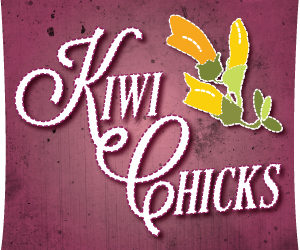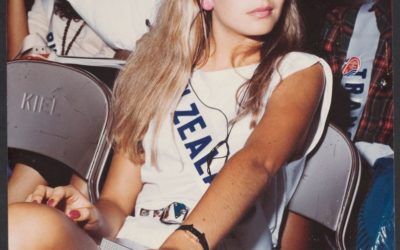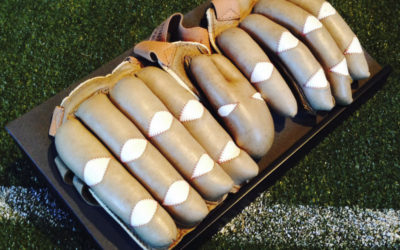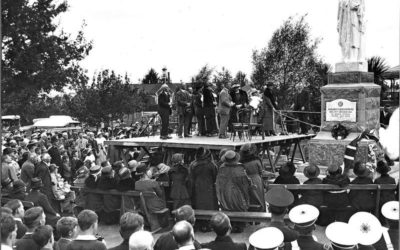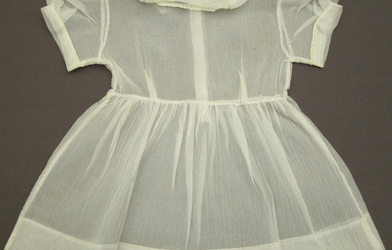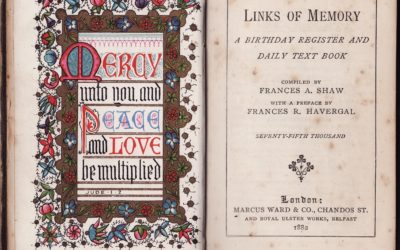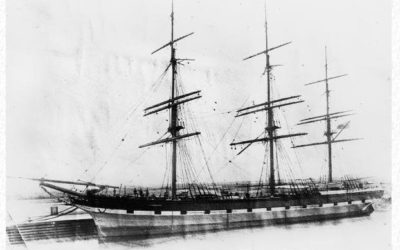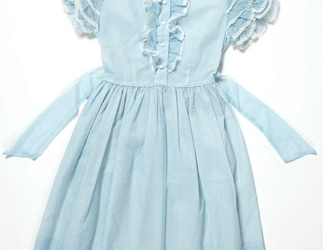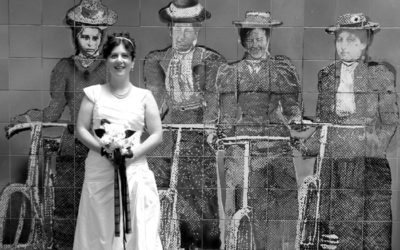Kiwi Chicks: New Zealand Girl History
Kiwi Chicks: New Zealand Girl History/Ngā Kōhine Kiwi: He Hitori Taitamāhine o Aotearoa is a collections-driven exhibition project that explores girlhood in New Zealand during the 18th-20th centuries co-produced by Girl Museum and National Services Te Paerangi.
In order to preserve NZ girl culture, this project identified ‘girlhood’ objects in New Zealand museums, libraries, archives, schools, historical societies, and art galleries, and created an exciting exhibition that informs and inspires girls of today with the stories, achievements and struggles of yesterday’s girls, as well as reaching a general audience.
Project Goals
- Empower NZ girls with knowledge of their own histories
- Establish a continually growing online exhibition
- Create a collaborative online community
- Provide a public research & educational database platform
- Enable museums to look at their collections in a new way
- Provide incentive to digitize new objects to share with others
Have a look at the objects in the ‘Kiwi Chicks’ collection. Click on an object thumbnail, then scroll down below the grid to see the object details.
To find out more, click on an object above.
Girls of Significance | Kōhine tāpua
Suffrage 125 on Kiwi Chicks: New Zealand Girl History | Ngā Kōhine Kiwi: He Hītori Taitamāhine o Aotearoa
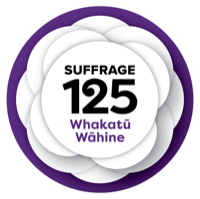 As part of 2018’s Suffrage 125 Commemorations, Girl Museum and National Services Te Paerangi asked for shared collection objects and stories with a focus on girls of significance through the Kiwi Chicks: New Zealand Girl History | Ngā Kōhine Kiwi: He Hītori Taitamāhine o Aotearoa online exhibition.
As part of 2018’s Suffrage 125 Commemorations, Girl Museum and National Services Te Paerangi asked for shared collection objects and stories with a focus on girls of significance through the Kiwi Chicks: New Zealand Girl History | Ngā Kōhine Kiwi: He Hītori Taitamāhine o Aotearoa online exhibition.
We were looking for items with a connection to particular individuals that tells their story to our community. This also incorporated pieces that wouldn’t necessarily be found in an archive. We wanted objects used by girls, about girls, girl history and girl material culture. Say if you had the school journal of Helen Clark or a cricket bat that belonged to Emily Drumm, examples from the Scout or Girl Guide community, influential girls belonging to your iwi or who attended your school, or from immigrant backgrounds. Participants tagged material related to this project with #suffrage125, and shared deeper interpretation through the Kiwi Chicks blog.
Where to next?
Being involved in a project celebrating such an important event as the 125th anniversary of Suffrage being given to the women of New Zealand has been inspiring. It is incredible that 125 years ago, New Zealand women successfully fought for the right to vote and made...
Lorraine Downes: New Zealand’s Miss Universe
“I feel like a princess.” Lorraine Downes, Miss New Zealand 1983 at the Miss Universe 1983 pageant via Te Papa Tongarewa. Lorraine was 19. The year was 1983. The Prince and Princess of Wales visited with Prince William, Dave Dobbyn had won Male Vocalist of the year at...
Pearl in White
Pearl Savin’s Batting Gloves, Christchurch, 1935. Image sourced via the New Zealand Cricket Museum, Pearl Savin Collection. Since 1910, the number of New Zealand women becoming interested and involved in cricket has steadily...
Margaret Cruickshank: The Beloved Physician
In the 1890s, New Zealand schools made progress towards equality by allowing young New Zealand women to have access to scientific areas of study. This, in itself, led to the rise in interest and further academic study in the sciences. Waimate Museum and Archives has...
Welcome to the Girls of Significance | Kōhine tāpua
After working months behind the scenes here at Girl Museum and National Services Te Paerangi, we are proud to announce the launch of Kiwi Chicks: Girls of Significance | Kōhine tāpua. Those who have followed us since the 2013 launch will know that Kiwi...
The Jones Collection of Children’s Clothes
Girl’s dress, CT08.4822.34, From the collection of Owaka Museum Wahi Kahuika. The Jones family baby and toddler clothes in the Owaka Museum collection date to the 1950s and 60s and were worn by three daughters, Pamela, Zelda and Vicki. A number of...
Poems from the Birthday Book
Jessie Kirkness' Birthday Book In order to illuminate more of the fascinating stories within the Birthday book brought to New Zealand by jessie Kirkness, we have included some of the writing and poetry below. All of the spelling is original, so there are a few...
The Birthday Book
Forfarshire at dock in Dundee, Scotland. Without correspondence or diaries it is very hard to imagine how a twelve-week sea voyage in 1883 would appear to an eleven year old girl embarking from the Orkney Islands to a new life in the colony of New Zealand. We are...
Best Dress
Child’s Dress, Te Papa Tongarewa, Gift of Shelley Venimore (née O’Brien), 2011. The new Kiwi Chicks exhibition has provided the opportunity to show off some of Te Papa’s childhood collection, in many cases for the first time. There are some real gems crying out to be...
Kiwi Chicks Inspire New Zealand
'Bride on the Suffragette Steps', Khartoum Place, Auckland Central, 19th January 2008. Photographer: Gerald Shacklock. As unique as kiwis are to this land, so are the girls who have grown up here. Aotearoa New Zealand has a rich history of experiences for girls and...
It’s easy. Here’s how you get started.
- Create an account on eHive, and then join the Kiwi Chicks eHive community.
- Add objects into your online collection.
- Now select objects to include in the Kiwi Chicks community in one click.
- You can contribute up to 200 objects for free, more with paid accounts.
- Kiwi Chicks will showcase all types of objects from New Zealand girl history.
- We want objects used by girls, for girls, about girls, and girl material culture, including found objects, photographs, fine art, clothing, and ephemera.
- Choose the objects in your collection to contribute
- Finalise the content you’d like to share about these objects
- Select or create digital images for the objects
- Ensure that you have copyright clearance to publish the objects and images
- Upload your records in bulk or create them online in eHive
Resources
There are not many books or articles about children’s lives in New Zealand, especially girls. Below are a few we have found, as well as some links to other sites of interest.
If you know of any resources that should be included, please send them to us.
Dear Dot by Keith Scott
Collecting kids’ stuff: in search of the history of childhood in New Zealand museums by Lynette Townsend
History of Children’s Play in New Zealand
Denniston Rose by Jenny Pattrick
Children from the Lighthouse by Mabel Pollock
Credits
We want to thank all of the organisations participating in the ‘Kiwi Chicks’ exhibition project since its beginning in 2012.
Girl Museum
Girl Museum is the first and ONLY museum in the world dedicated to the celebration of girlhood. It is a virtual space for research, exhibitions and education centered wholly on the subject of being a girl. We explore and document the unique experience of growing up female through historic and contemporary images, stories and material culture. Our primary focus is research, exhibitions and collaboration.
Te Papa Tongarewa
Te Papa is New Zealand’s bold and innovative national museum and a recognised world leader in interactive and visitor-focused museum experiences. New Zealand’s geology and natural environment and the stories of New Zealand’s indigenous people, the Māori, are celebrated in Te Papa’s permanent exhibitions, while Te Papa’s Marae is a vibrant contemporary meeting house and a living communal centre, unique in a museum.
Cricket Museum
At the Cricket Museum visitors can see that there’s more to cricket than Tests and tea breaks with exhibits showing the game’s development since its early-1800s introduction into New Zealand summers.
Katherine Mansfield House & Garden
Katherine Mansfield House & Garden is the birthplace of Katherine Mansfield, one of New Zealand’s most internationally famous writers. The House, now a Category 1 historic place, will be recognisable to readers of Mansfield’s stories Prelude, The Aloe and A Birthday.
Alberton
This romantic timber mansion began as a farmhouse in 1863 and was later expanded to 18 rooms, with fairy-tale decorative verandahs and towers. It was owned by the Kerr Taylors, a leading family in Mount Albert, until it was left to the New Zealand Historic Places Trust (now Heritage New Zealand) in 1972.
Te Awamutu
Explore the history and stories of Te Awamutu through a range of permanent and temporary exhibitions. ‘True Colours’ tells the story of Tim and Neil Finn, known as Split Enz and Crowded House. The Tangata Whenua Gallery features many spectacular Tainui treasures. The turbulence of the Waikato Wars is explored in our exhibition ‘NZ Wars – the Waikato campaign’.
Owaka Museum
Owaka Museum Wahi Kahuika- the Meeting Place: a rest on your journey. A community museum in the picturesque Catlins.
Ewelme Cottage
This kauri-constructed Ewelme Cottage has a link with the Anglican community in Auckland, the dwelling designed and built by the Reverend Vicesimus Lush (1817-1882) and his wife Blanche in 1863-64. Ewelme Cottage is of considerable importance for its well-preserved interiors and furnishings, and provides great value on colonial building materials and techniques. It boasts close to 2000 books, hundreds of pages of sheet music, original artworks and a vast array of everyday objects from ointment pots to knitting needles.
Raglan and District Museum
Our museum provides a window on local history for the Raglan Whaingaroa area and adjacent districts. It is open every day. Displays are being progressively established through 2012 and will cover Maori, settler, farming, surf and extreme sports, art, natural science, photography and town life history.
Whanganui Regional Museum
The Whanganui Regional Museum founded in 1892, has extensive collections of natural and human history with a regional emphasis. It houses objects of national and international significance. The emphasis of the collection is primarily Whanganui. There are also significant collections from elsewhere, for example, a large Pacific Island collection and ceramics from Asia and Cyprus.
North Otago Museum
Situated in the 1882 historic Athenaeum building, the museum has nationally significant collections; The Willetts Collection of taonga tuku iho o Waitaha and the Temuka Pottery Collection. The Community Archive is used by genealogists and historians from throughout New Zealand and houses documents and photos from the North Otago region.
South Otago Museum
Just beyond the Balclutha Bridge this museum has extensive collections on display of domestic and industrial heritage reflecting 150 years of pioneer endeavor on the fertile plains and river deltas of South Otago. The artefacts housed in the museums machinery room illustrate industries on the lower Clutha River and the coastline as far the Nugget Point Lighthouse, the horizon of the Catlins.
National Scout Museum
The National Scout Museum is in the Conference Wing of the building complex at the “Blue Skies” Conference and Training Centre in Kaiapoi – North Canterbury. It has a permanent display detailing the history of Scouting in New Zealand starting from Baden Powell’s story and his founding of the movement, before covering the origins of Scouting in New Zealand. Kaiapoi features strongly in the New Zealand history of Scouting being where the first Scout Patrol is reputed to have been formed and early camps were held at Woodend where today a memorial cairn is located.
Rotorua Museum Te Whare Taonga O Te Arawa
Rotorua Museum of Art & History – Te Whare Taonga O Te Arawa – is housed in the magnificent Bath-House building situated in beautiful Government Gardens. The Bath-House, constructed as a therapeutic spa in 1908, is listed as a Category 1 Historic Building and is believed to be the most photographed building in New Zealand.
Clendon House
Clendon House, unpretentious in design, displays the dignity of a house suited to Captain James Reddy Clendon’s high public position. Captain Clendon was in the thick of the earliest Māori and Pakeha interaction. He was a witness to New Zealand’s Declaration of Independence in 1835, the first United States Consul in 1838, a witness to the Treaty of Waitangi in 1840 and a member of the first Legislative Council.
Highwic
One of New Zealand’s finest timber Gothic houses, Highwic was begun in 1862 by Alfred Buckland, one of Auckland’s most substantial land owners, and his wife Eliza. It was extended in 1873 in the style of the original, which had been copied from American A. J. Downing’s pattern book ‘The Architecture of Country Houses’.
Kemp House and Stone Store
New Zealand’s oldest European building, Kemp House, sits next to our oldest stone building, the Stone Store, at the head of the Kerikeri River Basin. The Stone Store will be open to the public in 1998 after an extensive, three-year conservation project.
Waimate Museum and Archives
Waimate Museum and Archives highlights the extensive range of exhibits that are collectively gathered from the wider Waimate District. Housed in the former Waimate Courthouse, the museum also houses their Archival research facilities that contain local government records, local history books, newspapers, documents and photographs.
Museum of Transport and Technology (MOTAT)
MOTAT is the largest museum of its kind in New Zealand and promises a fun, interactive and educational experience for both young and old. Learn about New Zealand’s transport and technological developments over the centuries and visit the award-winning Aviation Display Hall where you can see some truly iconic military and civil aircraft.
New Zealand Fashion Museum
The Fashion Museum is a bold new and innovative institution. It chooses to embrace the traditional name and to honour the important function of a museum which is to develop social knowledge and to encourage discussion about key aspects of our community and of our national identity. The Fashion Museum breaks with tradition however in its form, choosing to be more fashion’able’. That is, able to be dynamic and a museum trendsetter.


